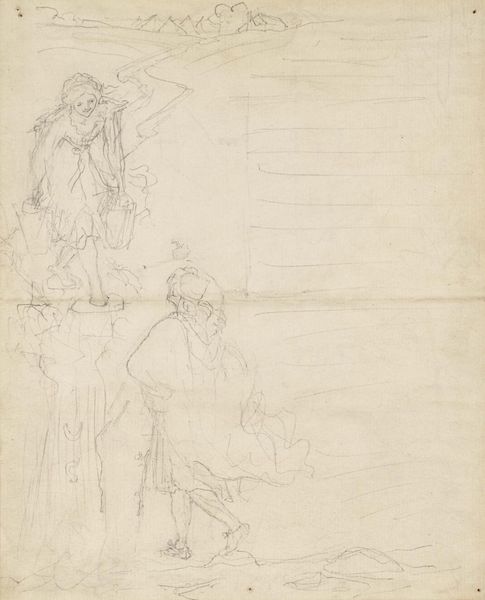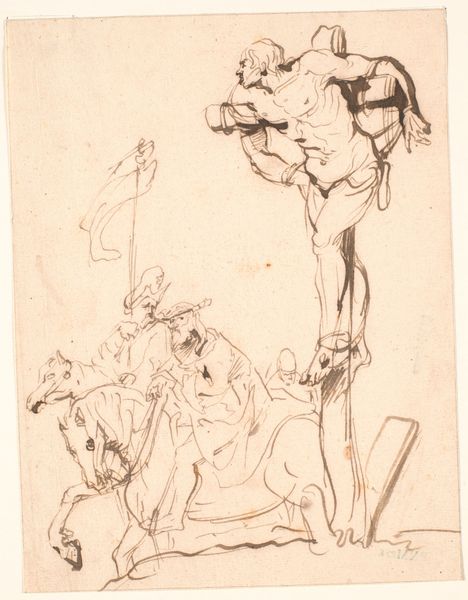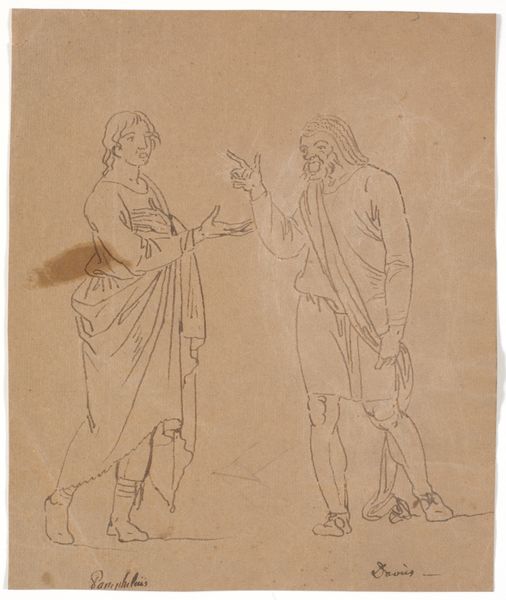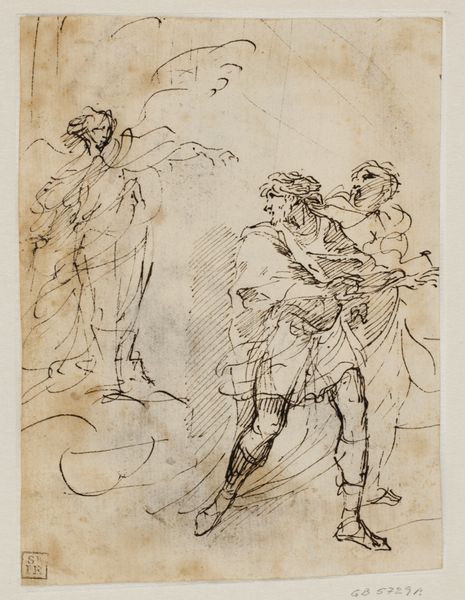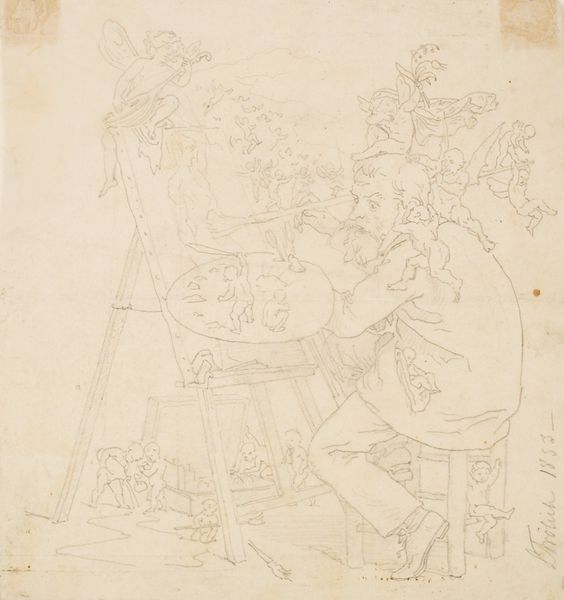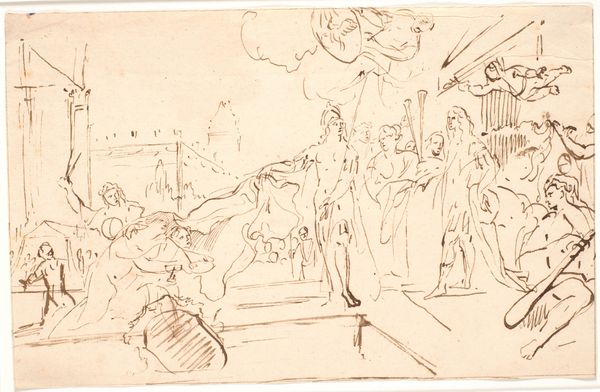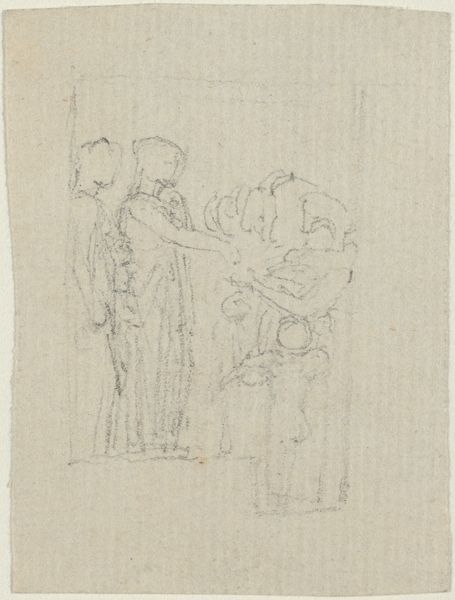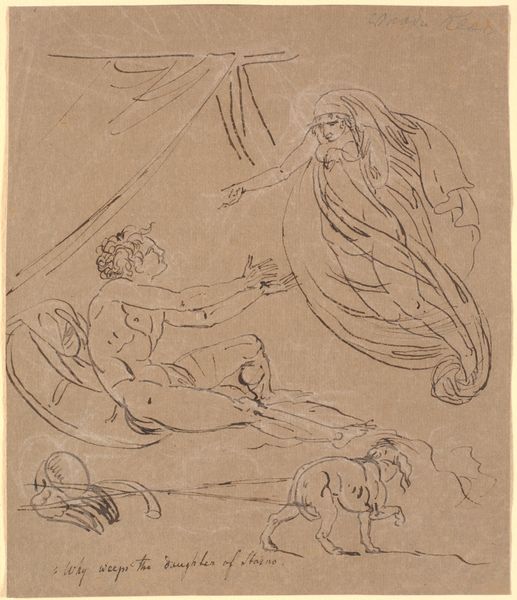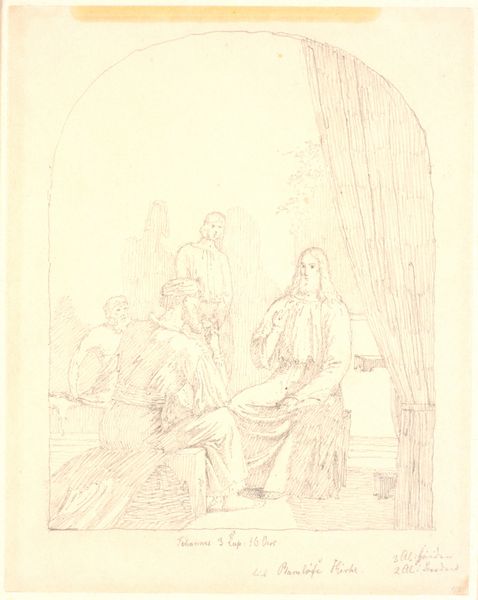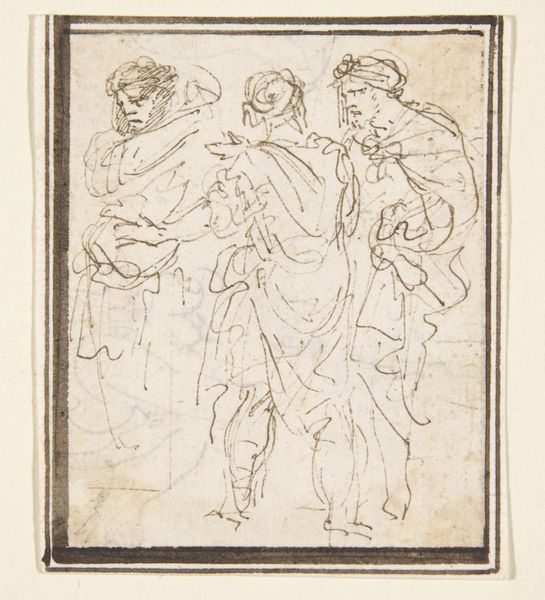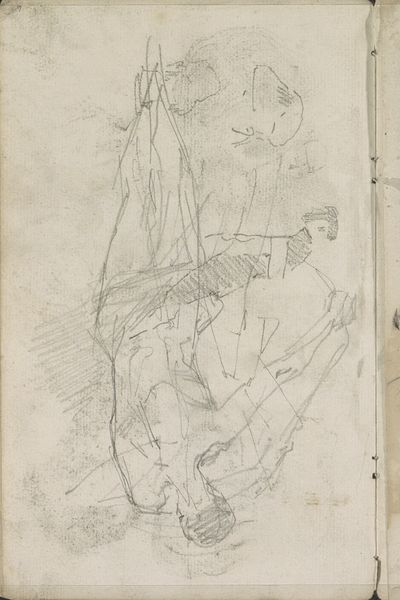![Simo og Davus. Studie til Pigen fra Andros. [Jordemoderen forlader Androspigens hus] by Nicolai Abildgaard](/_next/image?url=https%3A%2F%2Fd2w8kbdekdi1gv.cloudfront.net%2FeyJidWNrZXQiOiAiYXJ0ZXJhLWltYWdlcy1idWNrZXQiLCAia2V5IjogImFydHdvcmtzLzFiMmQ0OGU2LTMxODctNDVmNi04ZmI3LTVjMTllOTBhMzNhMS8xYjJkNDhlNi0zMTg3LTQ1ZjYtOGZiNy01YzE5ZTkwYTMzYTFfZnVsbC5qcGciLCAiZWRpdHMiOiB7InJlc2l6ZSI6IHsid2lkdGgiOiAxOTIwLCAiaGVpZ2h0IjogMTkyMCwgImZpdCI6ICJpbnNpZGUifX19&w=3840&q=75)
Simo og Davus. Studie til Pigen fra Andros. [Jordemoderen forlader Androspigens hus] 1743 - 1809
0:00
0:00
drawing, pencil
#
drawing
#
figuration
#
pencil
#
history-painting
#
academic-art
Dimensions: 267 mm (height) x 213 mm (width) (bladmaal)
Curator: Before us, we have a drawing by Nicolai Abildgaard, dating roughly from 1743 to 1809. It is entitled "Simo og Davus. Studie til Pigen fra Andros. [Jordemoderen forlader Androspigens hus]" which translates to "Simo and Davus. Study for the Girl from Andros. [The Midwife leaves the Girl from Andros's house]". Editor: What strikes me immediately is the dynamism captured in simple pencil strokes. It feels like a frozen moment of high drama, starkly portrayed. The rapid lines suggest urgency. Curator: Indeed, the sketch served as preparation for Abildgaard's painting inspired by Terence's comedy, "The Woman from Andros". You can see the clear application of academic principles in his rendering of figures. His intent isn't to conceal artifice; each line speaks of a careful intellectual consideration, emphasizing form and pose as signifiers. Editor: From a historical perspective, it's intriguing how Abildgaard appropriates classical drama to engage with contemporary social themes. Terence's play, with its themes of societal expectations and gender roles, gained resonance within the socio-political context of 18th-century Europe. Curator: Note, also, how the figures' gestures become crucial; Davus’s outward facing hand seems to denote accusation. What theoretical approach can be derived from these gestures alone? Editor: Well, perhaps consider it was originally situated in the public's moral and didactic expectations in its period. Academic art had specific social roles: Did the use of classic settings somehow lend weight and acceptability to social criticisms? Curator: Yes, Abildgaard is demonstrating academic discipline and simultaneously nodding toward classical antiquity as a foundation for contemporary morality, but by framing his figures from ancient comedies, what does it evoke today? Editor: It reveals an ambition far beyond merely illustration, really. His works encouraged discussions about history, philosophy, and citizenship. Curator: So, this sketch—with all its apparent simplicity—serves as an intersection of history, theater, and philosophy. Editor: Leaving me to further consider just how profoundly our interpretations of art transform, contingent on both formal analysis and historical contexts.
Comments
No comments
Be the first to comment and join the conversation on the ultimate creative platform.
